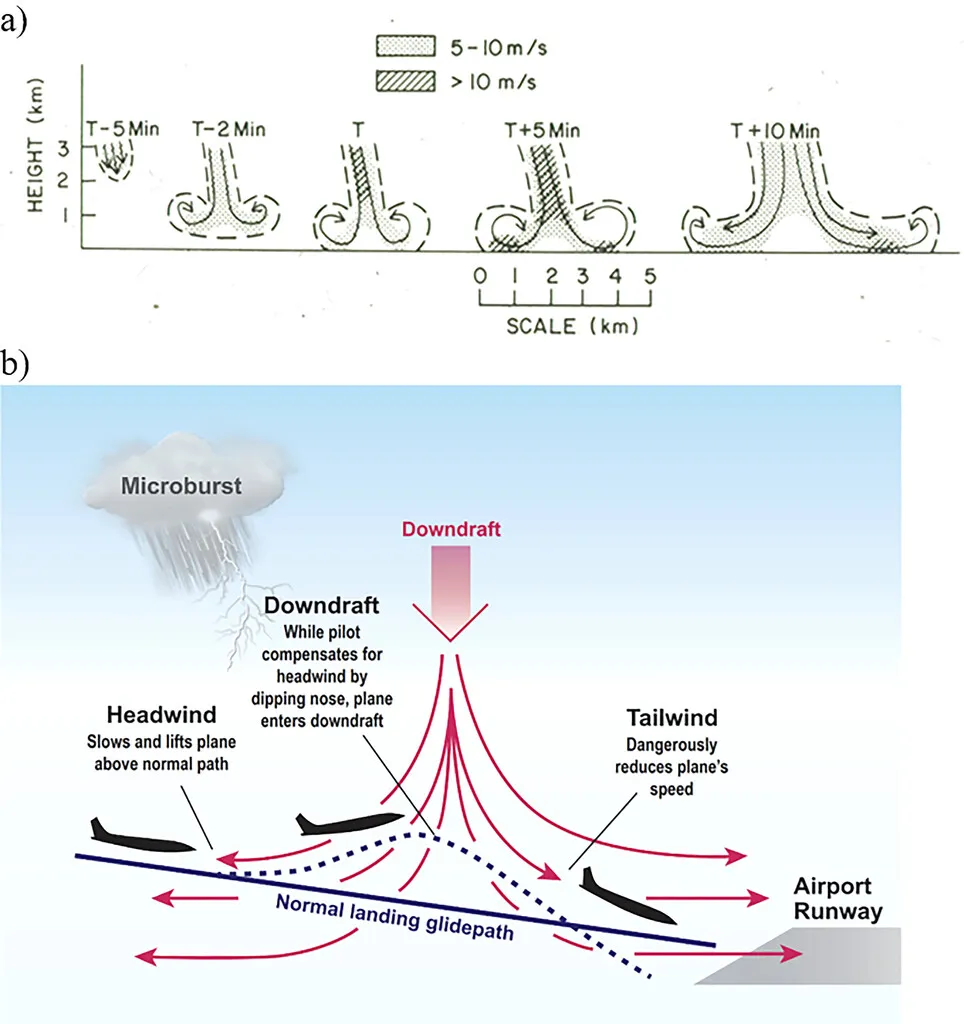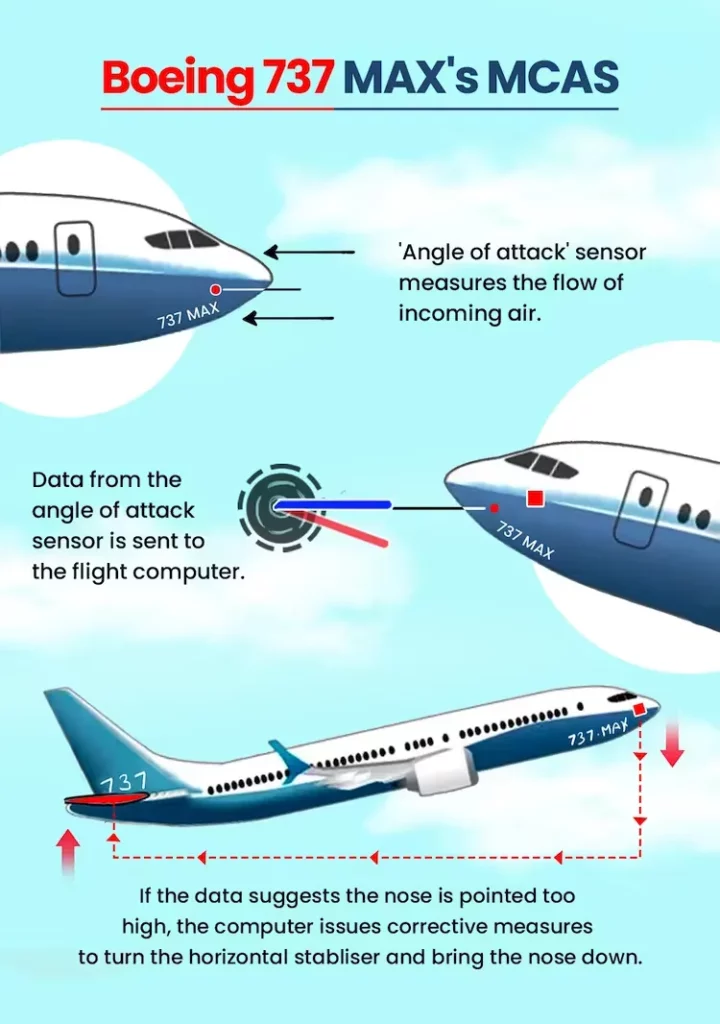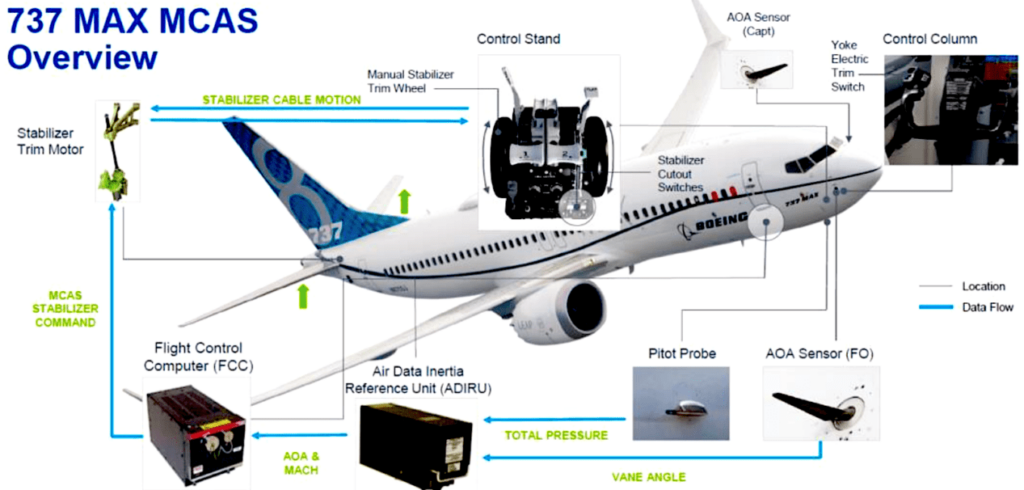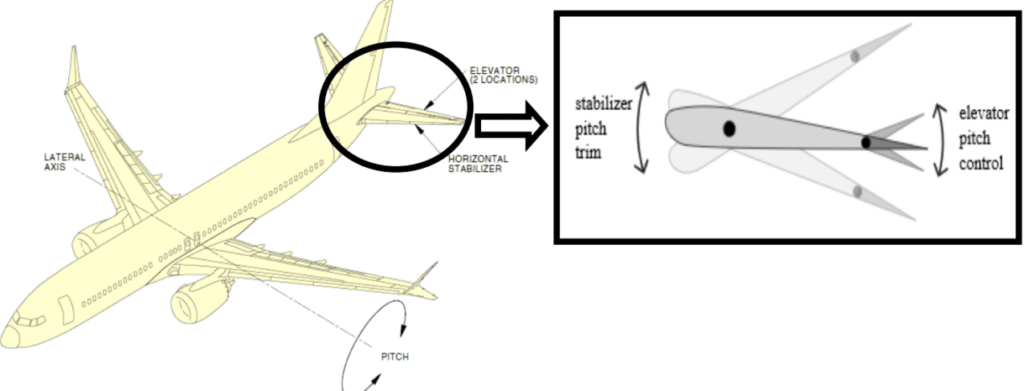The Role of MCAS in the Lion Air 737 MAX Crash
Aviation safety relies heavily on understanding the systems that control modern aircraft. The Maneuvering Characteristics Augmentation System (MCAS) became infamous following the tragic crash of Lion Air Flight 610. This incident has sparked widespread debate about the safety protocols surrounding the Boeing 737 MAX and the communication of critical systems to pilots.
What is the MCAS System?
The Maneuvering Characteristics Augmentation System (MCAS) was developed by Boeing to address the unique aerodynamic challenges introduced by the larger, more fuel-efficient engines on the Boeing 737 MAX. These engines, mounted further forward and higher on the wings compared to previous models, created a tendency for the aircraft’s nose to pitch upward during specific flight conditions, such as steep turns and high angles of attack (AOA). To counteract this, Boeing implemented the MCAS, which automatically adjusts the horizontal stabilizer to bring the nose down when the AOA becomes too steep.

However, the initial design of MCAS relied solely on data from a single AOA sensor, making it vulnerable to erroneous inputs. This flaw became tragically evident in the crashes of Lion Air Flight 610 and Ethiopian Airlines Flight 302, where faulty AOA sensor readings triggered MCAS repeatedly, leading to a loss of control.
In response to these accidents, Boeing made several critical updates to the MCAS system. The revised version now uses data from two AOA sensors and only activates if both sensors agree on the need for correction. Additionally, MCAS is now limited to activating only once per high AOA event, and the system’s ability to override pilot inputs has been reduced, ensuring that pilots retain control over the aircraft at all times.
Furthermore, Boeing has enhanced pilot training to ensure that they fully understand how MCAS operates and how to manage it during flight. The updated training includes both theoretical instruction and practical simulation exercises. Despite these improvements, the return of the 737 MAX to service has been cautious, with regulatory bodies worldwide conducting thorough evaluations before recertifying the aircraft for commercial use.
About MCAS
| MCAS Characteristics | Impact on Aircraft |
|---|---|
| Activates automatically without pilot input | Adjusts nose down in high AOA situations |
| Response based on airspeed and altitude | Moves stabilizer at a rate of .27 degrees per second |
| Maximum adjustment of 2.5 degrees | Can override manual controls under certain conditions |
The MCAS is designed to enhance the aircraft’s stability, but the Lion Air crash revealed significant flaws in both the system’s design and the way it was communicated to pilots. The updated MCAS now includes additional protections, such as requiring agreement between two sensors and providing pilots with more control, addressing these critical vulnerabilities.

The Lion Air Crash: What Went Wrong?

Flight data from the Lion Air crash indicated that a faulty angle of attack vane, located on the aircraft’s nose, provided erroneous data to the MCAS. The system, detecting what it interpreted as a stall situation, repeatedly forced the nose of the aircraft downward. The pilots, unaware of the existence of MCAS and how it operated, struggled to counteract the system’s actions. Despite their efforts, they were unable to regain control, leading to the tragic crash.
Analysis of the Incident

The investigation into the Lion Air crash revealed several critical issues:
- Faulty AOA Sensor: The AOA sensor provided incorrect data, which triggered the MCAS.
- Pilot Unawareness: The crew was not informed about the MCAS system or how to deactivate it in case of malfunction. The lack of information in the flight manuals and training sessions left the pilots unprepared for the system’s automatic actions.
- Manual Override Challenges: The MCAS’s design initially made it difficult for the pilots to manually override the system’s input, leading to a “nose-heavy” condition that they could not correct. With the recent updates, the MCAS no longer overrides manual controls, giving pilots more authority over the aircraft in emergency situations.

These factors combined to create a scenario where the pilots were effectively fighting against the aircraft’s own control system, with fatal consequences. The lessons learned from this tragedy have led to significant changes in the design, operation, and pilot training related to the Boeing 737 MAX, ensuring that such an incident does not happen again.
